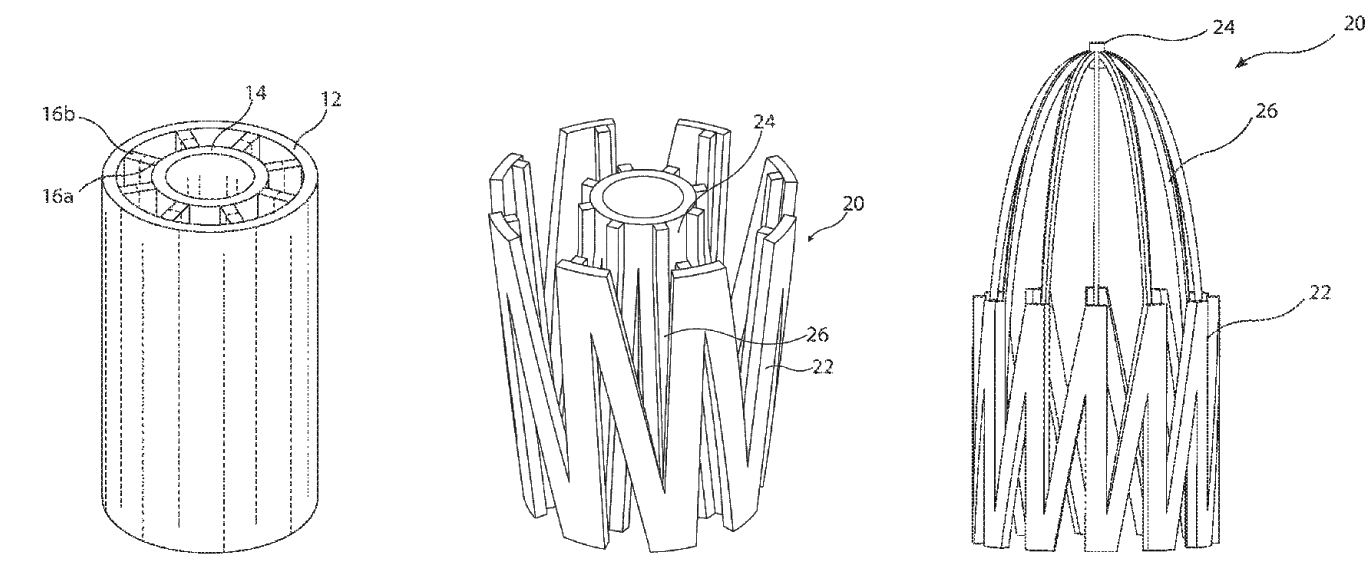Vascular filters are needed for trauma, orthopaedic and neurosurgery patients and those with medical conditions requiring bed rest due to the increased likelihood of thrombosis. A thrombus that breaks away from a vessel wall may pose a serious risk of pulmonary embolism as blood clots migrate from the peripheral vasculature through the heart into the lungs. Typically, patients with vascular filters that are implanted temporarily require a further medical procedure to remove the filter. Medical devices are developed to be biodegradable generally, however, this has not been extended to vascular filters due to problems in controlling its degradation.
In November 2018, Cook Medical Technologies LLC was granted UK patent GB2543506B, titled Biodegradable vascular filter, which discloses a method of manufacturing a vascular filter from a tubular member that includes a first portion and a second portion. Here, the second portion is arranged concentrically around the first, wherein the material for the first has a faster biodegradability rate than the second. The method includes cutting the first portion – for example, via a laser along the dotted lines shown – to form filtration struts for a filtration basket, and cutting the second portion to form supporting stent struts. Optionally, both elements are co-extruded imbuing the filter with different degradation profiles without the need for joining. The portions may also have different mechanical properties, such as different stiffness or elasticity.
In one embodiment, pictured, an outer tube (12) of the vascular filter (20) is formed from a biodegradable polymer, L-polylactide (L-PLA), surrounded by and radially spaced from an inner tube (14). The outer (12) and inner tubes are connected via eight flanges (1 6), and the inner tube and flanges are formed from a co-polymer of PLA, which has a faster degradation profile than the L-PLA in the outer tube.
Stent struts (22) cut from the outer tube form a supporting stent structure of the vascular filter while an uncut portion at the distal end of the inner tube – downstream with respect to blood flow – forms a hub (24). The connecting flanges are cut to create filtration struts (26) that extend from their distal ends at the hub to their proximal ends — upstream with respect to blood flow — where they connect to the proximal ends of the supporting stent structure made by the stent struts. Thus, a filtration basket is formed by the filtration struts arranged inside said supporting stent structure. Optionally, the vascular filter may be thermally processed in an expanded configuration. It is then compressed ready for use.
The patent discloses further embodiments of the vascular filter formed using other cutting patterns, such as that pictured. Optionally, the hub and filtration struts exhibit greater biodegradability than the stent struts of the supporting stent structure, while the surface of the hub may be abraded to ensure it starts to degrade before the filtration struts. In use, the vascular filter can be delivered to the inferior vena cava, guided to its in vivo location using a wire running through its inner lumen. Upon expansion of the device in vivo, the supporting stent structure consisting of the stent struts expands to engage against the vessel wall. This assists in holding the filtration basket in place for a limited period of time.
The hub followed by the filtration struts biodegrades, breaking down into lactic acid that is metabolised and excreted. The supporting stent structure remains in place during this process. The filtration struts degrade first without breaking away from their location in the vessel, and support is provided to the vessel wall for some time thereafter, before the supporting stent structure biodegrades.
Read the full patent here.
This article first appeared in the November 2019 issue of Materials World, the member magazine of the Institute of Materials, Minerals and Mining.
The Patent Eye blog offers a glimpse into the future by showcasing newly granted patents. Join us as we explore the latest innovations shaping our world.
The Patent Eye blog is made available by Alphabet Intellectual Property for informational purposes, in particular, sharing of newly patented technology from granted and published patents available in the public domain. It is not meant to convey legal position on behalf of any client, nor is it intended to convey specific legal advice.
Craving intellectual stimulus? Peer into the insights brought to you by The Patent Eye and explore our latest articles.


